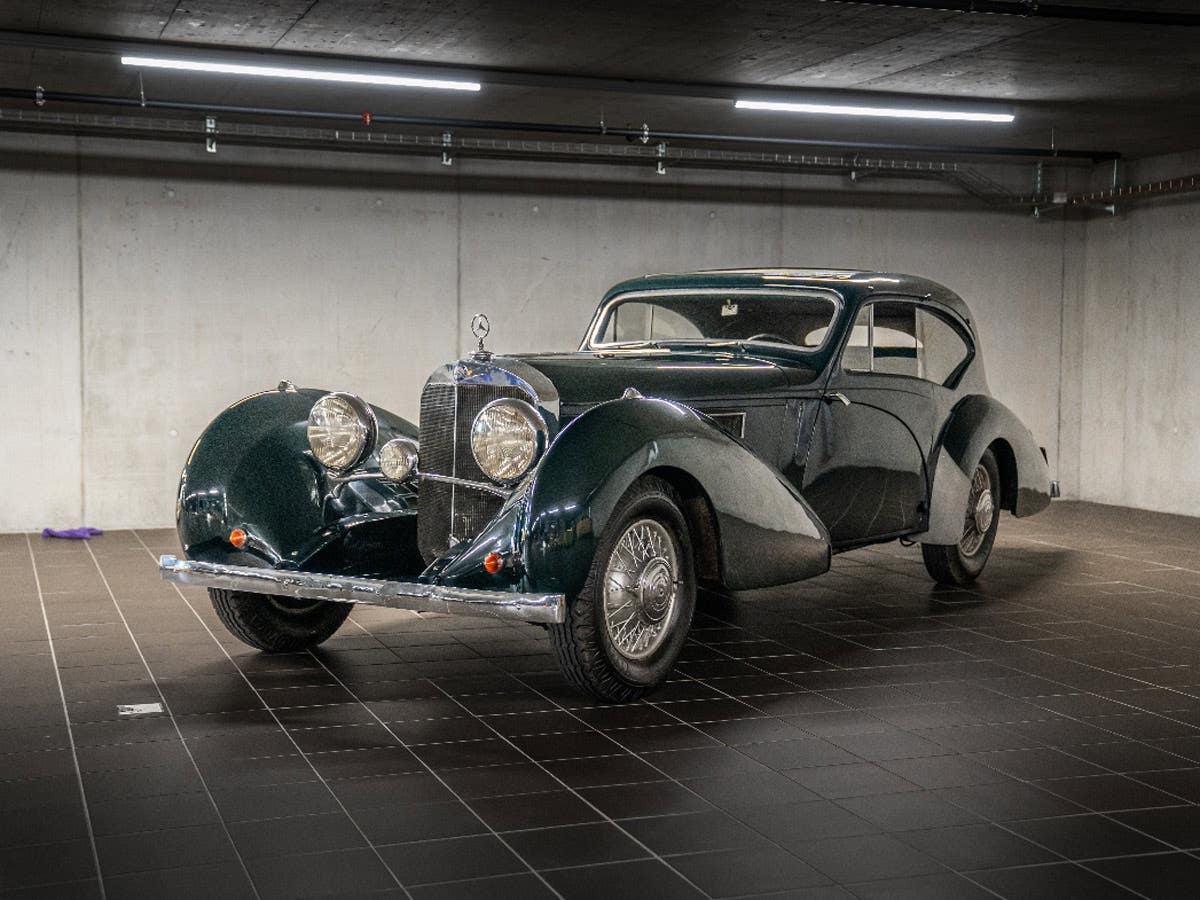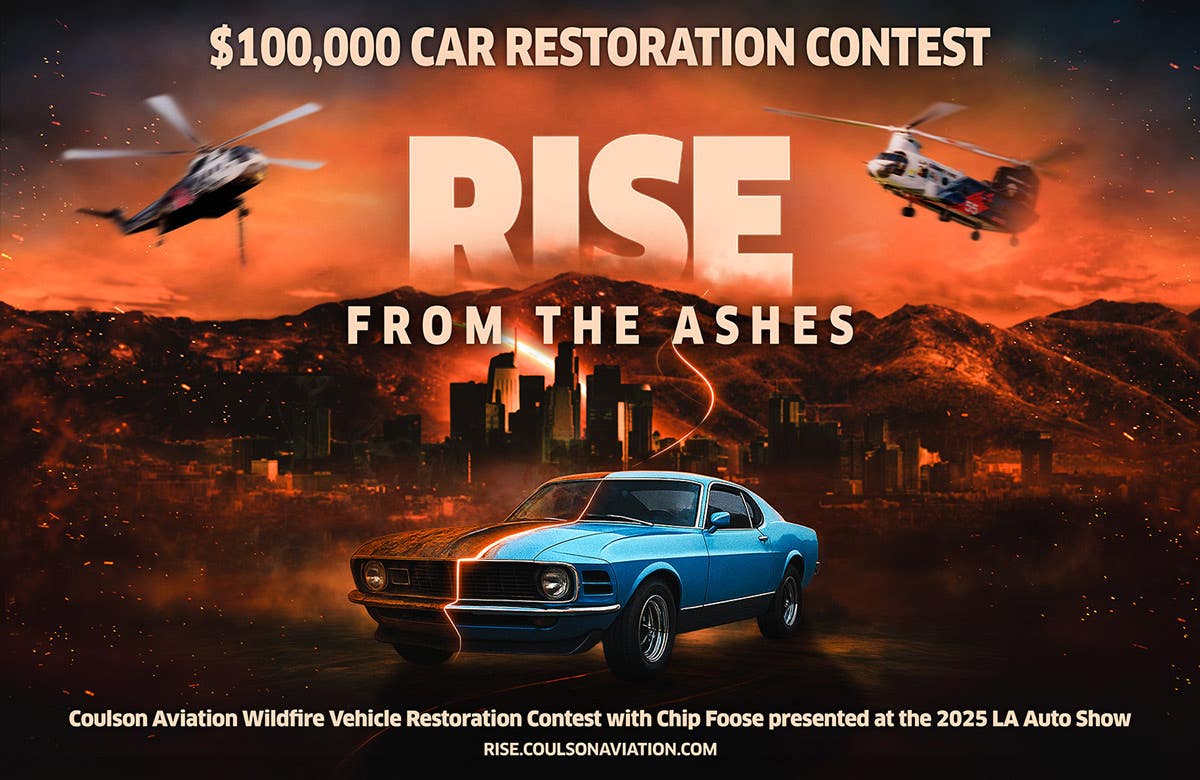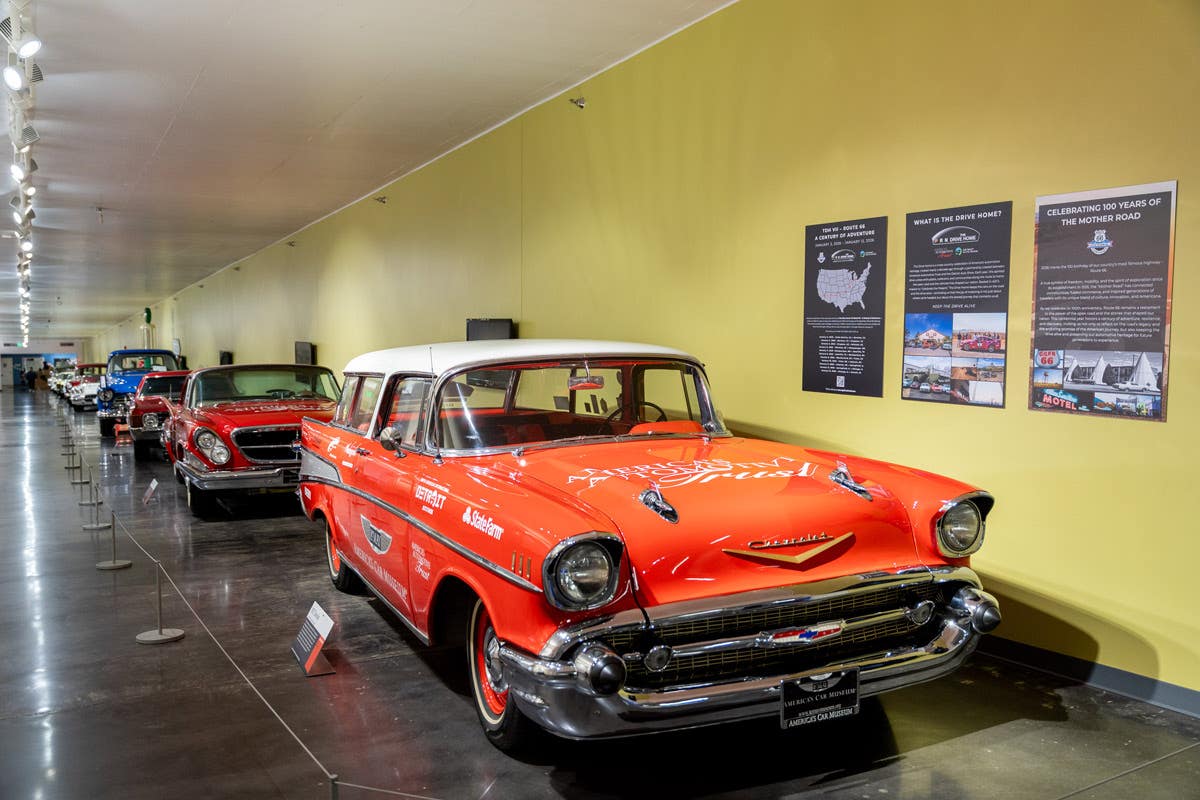A scene from the first Symco Shakedown, a traditional hot rod
event in Symco, Wis.
Car shows aren’t just a great excuse to get your car buddies and their cars together, they’re also a great way to raise funds for a cause, drive traffic to a needy part of town or to simply fill a club’s coffers for its other annual activities.
In February, Old Cars Weekly assembled successful show organizers from two events in an online seminar (webinar) to learn the tips and tricks to putting on a great event. These guests included Bill Miller, co-founder of Carlisle Events, and Rick Schlabowske and Mike Rosenow of the Symco Shakedown. Miller and Carlisle Events need no introduction, but the Symco Shakedown is a new event that burned rubber and spit flames of glory in 2009, and it’s gearing up for an even bigger traditional hot rod event in ’10. Together, these guests provided plenty of sound advice about how to start and maintain a healthy automotive event. A few highlights from that webinar were excerpted and are included here.
According to panelists in the recent “Get Your Show on the Road
to Success” webinar, the value of attractions, such as the
Futurliner, are immeasurable, and can have positive effects for a
show, even years after they are displayed.
Selecting a venue
Deciding where to gather faithful gearheads is likely the most important part of organizing a show, and one of the first aspects that must be established. It can easily make or break an event.
“Something really important, if you’re going to start an event, is the road system, the access to your venue,” Miller said. “Carlisle... is the keystone of the Keystone State and is a fantastic area where all of the roadways intersect.”
Being on several paths has certainly helped Carlisle Events grow, but for the boys from the Symco Shakedown, it was more about scenery than accessibility. Symco is a town of only a few hundred people, and is best characterized as being “11 miles east of Iola, Wis.,” itself a town of only slightly more at 1,400 people. What Symco has going for it is a fairgrounds-like location with plenty of old buildings and antiques (including vehicles), known for its annual hosting of the Symco Union Thresheree. The shady grounds includes a functioning bar/soda fountain, permanent food vending buildings and room for bands and dancing under a fixed roof.
“One of the things we found out this last year is that people are really getting bored with sitting in a parking lot with a car,” Rosenow said. “A car show in the past was, you go sit in the parking lot of a Piggly Wiggly and you have spark plug-changing contests and you have loud ’50s music playing, and people are really getting bored with that.”
“The venue is very, very important,” Schlabowske added. “If you have something unique and different in your area, whether it’s an old fairgrounds or a county park that’s got a waterfall or a got a water park with it or it’s got anything that will help draw people [arrange your show there].”
Additionally, plenty of parking space, ease of entry and exit and room for potential growth should also be considered when selecting an event venue.
Picking a date
“First of all, there is never a good date,” Rosenow joked. “You are always going to conflict with something, whether it’s a church picnic or a Carlisle show. You pick the path of least resistance.”
“We picked an August date, not only because there wasn’t a conflicting show of this style within a couple hundred miles, but we also took into consideration that we had all summer to promote the event,” Schlabowske said.
“I think people that are starting events have to be very cautious of anything major that is going on within 300 miles — we had determined through the years that [people within 300 miles] are your strongest market,” Miller said. “We check Old Cars Weekly to see what events are going on. If we plan anything new, we plan at least 18 months ahead of time. You really need a year and a half to really plan an event and do it right. It takes a lot of research to be sure of what dates are the best, and there isn’t any great dates because there is something going on all the time. But be cautious of that 300-mile mark if you are going to start an event.”
Although it may seem to go against their own advice, Rosenow and Schlabowske held the Symco Shakedown on the same weekend as another large event, the nearby Iola Vintage Military & Gun Show with Vintage Tractors and Equipment. However, since the events were of a different nature, but had some cross-over interest, Rosenow believes the events helped each other and commerce in the area. It also helped that the hot rod show was held on Friday and Saturday, and the military show was a Saturday and Sunday event.
Promotions
The first show is always the hardest to promote, because there’s no background for people to talk about — organizers have to create it from scratch. The Symco Shakedown crew knew it took a lot of work to get the word out and wasted no time. They also made sure those promotional tools they did have accessible were professional quality to give credibility to the event.
“It was just good, old-fashioned wearing out shoe leather, putting gas in the car every Friday and Saturday and Sunday and going out and promoting the heck out of it,” Schlabowske said. “We started at the Detroit Autorama in March of last year and we were in five or six states doing promotions. We targeted our target audience, which is the traditional hot rod crowd, but we made a presence and we let everybody know we were serious about the show.”
When attending shows, Schlabowske and Rosenow handed out postcards featuring a traditional-style hot rod, rather than a flyer, which garnered interest. Those postcards took potential participants to a strong Web site that captured the flavor of the event through its design, as well as images of traditional hot rods on the show grounds to preview to the event. The pair also used the Internet to provide a “viral” awareness of the event by including subtle, informative posts in forums they frequently visited, but made sure they did not come off as pushy.
Having a hand-out is certainly not new, and Miller agreed that one of the most effective tools of a promoter is the flyer and, in today’s world, a Web site is a must.
“When we first started doing events, the best bang for the buck was definitely flyers,” Miller said. “We went to every show that was in the area and out of the area to promote Carlisle. Today, with the Web, it’s certainly a bargain to have a great Web site.”
Additionally, Miller added that an event also needs to be listed in event calendars, and advertising a show reaches an even bigger base of spectators, but it must be wisely done.
“We are very cautious with our advertising now... we’ve certainly learned over the years,” Miller said. “If you are a doing a general car event, then you have to be in Old Cars and [Hemmings]. There’s just no question about it. But if you’re going to be looking for a Chrysler show or a Ford show or whatever, you have to pick the publications that those guys read. So spending that money is very, very tough, because you’re not sure where it’s going to be for the best.”
Show preparations
Of all the preparations behind putting on a memorable bash for car fans, insurance and staffing are among the two most important — and necessary — requirements.
Generally, events use a liability umbrella policy that is available from a variety of insurers, including local insurance agents. And, policies are usually less than the price of a a couple carburetors in a swap meet.
“Event insurance for a small show is not really expensive,” Rosenow said. “If you’re only going to have 5,000 people show up and a couple hundred cars, it’s well under $1,000.”
When putting on an inaugural event, coming up with several hundred dollars might be a relatively large chunk of change, but it’s as necessary as the venue itself.
“Insurance is a must,” Miller said. “Don’t start a show without it, because if somebody falls and breaks a leg or something, you know they’re going to come after you.”
To accommodate all of these potential hazard risks, and to help minimize those risks, a show needs to be properly staffed, whether by employees or volunteers to assist and direct visitors. Organizing those workers can be handled in a variety of ways.
“Iola has... a person that is in charge of the gates, they have a person that is in charge of the food preparation, they have a person that is in charge of the garbage, rest rooms, parking, all the different things,” noted Schlabowske, who spent a year on the Iola Old Car Show staff. “Then those folks actually get lists together of all the volunteers, and they kind of coordinate the hours and everything else. They coordinate it with the staff of the car show, but they have their own area of responsibility and it’s based on the number of years they’ve been there and who’s willing to take on that Herculean task.
“The other thing you have to have, once you get out of the embryo stage of your show, is a standard operating procedure… so you can refer to it and do the same things the same way every time,” Schlabowske added. “And it doesn’t always work exactly that way, but after you get a few years under your belt, that’s something that you really should consider. If you write it down on paper, everybody knows what the rules are for any situation — whether it’s how to do a money drop or take care of an irate customer or what to do if a car is parked in the wrong spot.”
Event workers may have to endure a lot, from weather to irate visitors and anything else. Experienced event organizers know those people need to be taken care of.
“You don’t want to overwork your volunteers,” Rosenow said. “Don’t make them work all day. If they want to, let them, but a two-hour shift is plenty enough. The worst thing to do, especially with a first-year show, is to get someone who is volunteering their day and put them at the gate for 8 or 10 hours. Let them work for two hours. If they want to work longer, that’s fine, but compensate them. Give them free admission, give them a T-shirt... over-compensate them.”
Providing relief and beverages to volunteers also goes a long way to keeping them healthy and happily greeting the spectators and participants. Gate workers and other employees and/or volunteers are often the only show representatives that participants will encounter, and their experience with a show’s employees will help form an overall opinion of a show.
“[We value] everybody that works at Carlisle, and we call it the Carlisle Family, because each one of those people — I don’t care if it’s the lowliest guy on the totem pole — he’s very important to our event,” Miller said.
Keeping those people who help put on an event happy will be contagious, and turn first-time visitors into repeat visitors, who will then help spread the word about a great event.
OCW would like to thank Bill Miller of Carlisle Events (www.carlisleevents.com) and Rick Schlabowske and Mike Rosenow of the Symco Shakedown (www.symcoshakedown.com) for serving as panelists in the webinar from which this story was excerpted.
To listen to this recorded Old Cars Weekly online seminar in its entirety or any other seminar hosted by the Old Cars Weekly staff, go to www.shopoldcarsweekly.com and search “webinar.” To participate and ask questions during a live taping of an upcoming webinar, go to www.shopoldcarsweekly.com.
MORE RESOURCES FOR CAR COLLECTORS FROM OLDCARSWEEKLY.COM








